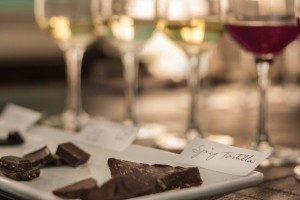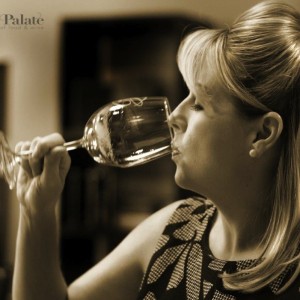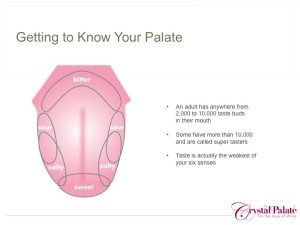 Pairing wine with chocolate sounds like a match made in heaven, but the wrong pairings can leave a bitter taste on your palate. However, the right coupling can create a euphoric experience for your taste buds!
Pairing wine with chocolate sounds like a match made in heaven, but the wrong pairings can leave a bitter taste on your palate. However, the right coupling can create a euphoric experience for your taste buds!
A general rule of the thumb when it comes to wine and dessert pairings is to select a sweeter wine than the dessert. While this is a good start for creating exquisite wine and chocolate pairings, there is plenty of gray area and personal preference also comes into play.
One of the most important things to think about when pairing wine and chocolate has to do with tannins. Dark (bittersweet) chocolate with a high cocoa content has more tannins than milk chocolate. Tannic chocolate and tannic wine compete for the same palate space leaving behind a somewhat chalky, unsavory taste on your mid-palate. If you love dark chocolate, opt for a sweeter dessert wine like Sauternes or Banyuls. If you love a drier red wine, choose fruit infused dark chocolate and a fruit forward red wine with integrated tannins like a Zinfandel. The fruit filling will bring out the fruit notes in the wine.
Here are a few wine and chocolate pairing ideas that will please even the pickiest palates. For a fun get together, host a wine and chocolate night at your house with some of these classic pairings.
Champagne – For an ultimate pairing, think white chocolate covered strawberries, white chocolate caramel apples or white chocolate shortbread. The fresh baked brioche characteristics in the bubbly provide a perfect complement to the shortbread and the high acidity is the perfect counterpoint to the creamy white chocolate. Looking for a budget friendly sparkler, grab a Vouvray Demi-Sec or Prosecco.
Riesling – This is unexpected and delicious when pairing with dark chocolate covered ginger or a milk chocolate bar with stone fruit and nuts.
Zinfandel – A youthful fruit forward Zinfandel can provide an interesting pairing with fruit infused milk chocolate and milk chocolate covered bacon.
Sparkling Brachetto – A sweet Italian dessert wine with notes of sweet raspberry and rose petals is decadent with just about any chocolate. The Rosa Regale paired with chocolate covered strawberries, dark chocolate raspberry truffles or chocolate cupcakes is a match made in heaven!
Port – A ruby port paired with chocolate peanut butter cups will create a nostalgic experience. The combined flavor profile will be reminiscent of an adult PB&J. A tawny port with notes of caramel and fig paired with milk chocolate covered graham crackers will create a taste sensation similar to a Twix bar.


